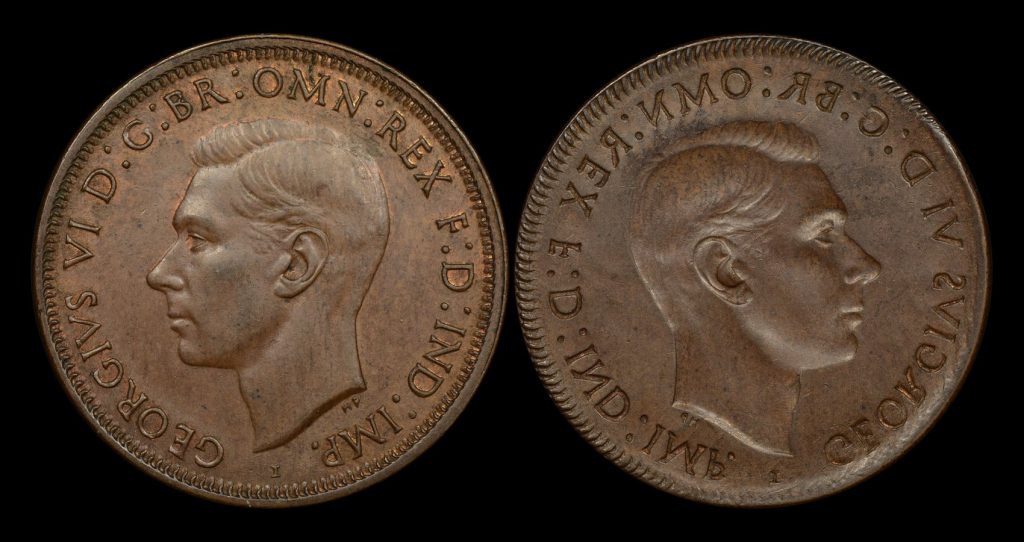As originally published in Australasian Coin and Banknote Magazine.
What Went Wrong -error coins that escaped the Mint
The image shown along with this article is one that plays tricks with your eyes. Are you looking at two distinct coins with different lighting and subject to some sort of image mirroring? Or is it, perhaps, the same coin that has somehow been struck in error? Of course, the image depicts both sides of the same coin, but it’s confusing enough to warrant more explanation. On the left you’re seeing the obverse of a 1942 or 1943 penny struck in Bombay, India. On the right an incused mirror image obverse of exactly the same thing. How, we hear you ask, is that possible?
In most basic terms the sequence of operations goes something like this:
- A coin is struck between the obverse and reverse dies.
- For some reason the coin fails to be ejected from the coin press and becomes jammed onto one of the dies. In the case of this example a coin was jammed onto the reverse die. This jammed coin is known as a die cap.
- A new coin blank is fed into the coin press and is positioned in the collar die.
- The coin blank is struck by the obverse die and the obverse of the stuck die cap. This forms a normal obverse strike on the coin blank and a mirror image obverse strike on what should be the reverse. This coin is known as a brockage.
- The brockage is ejected and another blank is fed into the coin press and another brockage is struck. And so on until the die cap is destroyed, dislodged, the coin press jams, or a press operator notices the problem and stops the production run.
Now we know how the coin shown was formed and we know what it is called, as a thought exercise it’s worth considering the die cap that struck our error coin. The brockage strike here is crisp and full which suggests that the brockage was among the first few coins struck by the die cap. It is, in error coin terms, a brockage struck by an early state die cap.
Why is this the case? In comparison to a coin die which is made from specially hardened tool steel, the bronze of a penny is ductile and prone to deformation under repeated impacts. This means that with each coin struck by a die cap it deforms and stretches and the design becomes softer and more stretched, as does each brockage strike it creates. Eventually all the design will be obliterated and no mirror image will be visible on struck coins and you’ll just see a smooth surface. Those error coins are known as brockages struck by a late state die cap.
Brockages of any coin in the Australian coin series are sought after, with early state examples like this one particularly desirable. The penny and half penny pre-decimal series provides the best opportunity of obtaining a nice example at an affordable price. Brockages in the decimal series are rare indeed and one must be willing to compete strongly with other collectors if wanting to obtain one!
Mark Nemtsas and Kathryn Harris own and run ‘The Purple Penny’ coin shop in Adelaide and are passionate about error coins.


